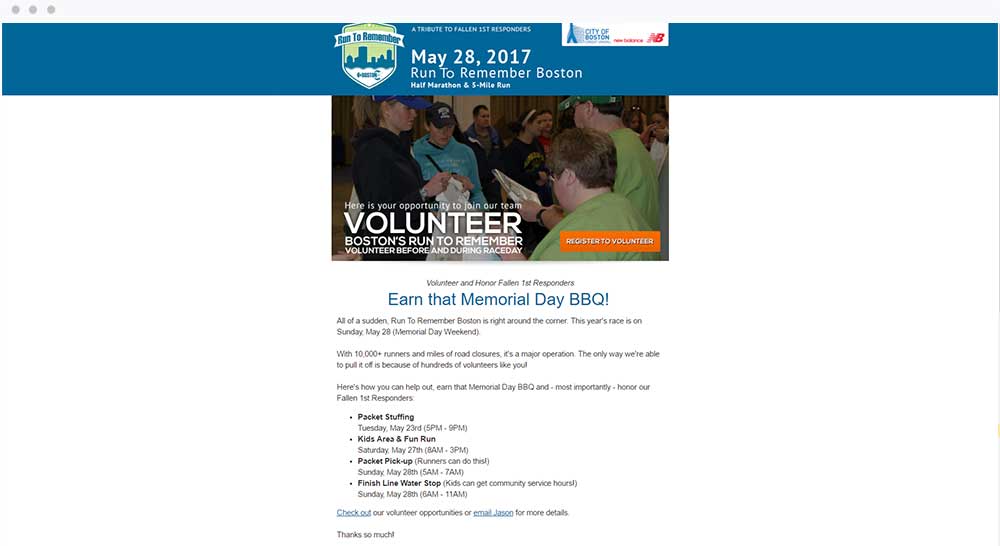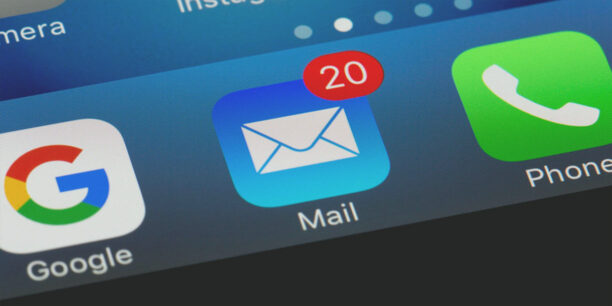10 Mistakes to Avoid in Your Fundraising Email Campaigns

Request a Demo
Learn how top nonprofits use Classy to power their fundraising.
According to 80 percent of marketers, email marketing is known to drive the acquisition and retention of customers and supporters. But most also admitted that despite this knowledge, they often lack effective strategies for targeted messaging, email testing, or mobile optimization.
As email marketing is still among the most effective and least expensive marketing strategies available to businesses and nonprofits, it’s important to observe best practices to ensure your email campaigns are as successful as possible. Avoid these 10 mistakes in your fundraising email campaigns to ensure your messaging resonates and incites action.
1. Not Telling Recipients What to Expect
Prospective donors don’t like surprises, like getting emails more frequently (or less frequently) than they anticipated. If you’ve ever felt hounded by a company that sends one or more new emails every day, you tend to get angry, and you become adept at hitting the delete button.
Let email recipients know right from the start what information you’ll be sending them (industry news, informational pieces, etc.), and precisely how often. Use your sign up page to set expectations with a header like, “Subscribe to our weekly newsletter.”
2. Deceptive or Hyperbolic Subject Lines
Marketers sometimes try to increase open rates with subject lines that promise the world, then fail to deliver. High open rates tell you how effective your subject line and send day/time were, but you want to focus on your conversion rates (aka how often your recipients take action from your email.)
Make sure your subject line matches what’s inside. If you don’t deliver on the promise of your subject line, then your supporters may feel frustrated and turn elsewhere to donate. If you need some help in this department, check out Classy’s recent post on “How to Write Killer Email Subject Lines.”
3. Misusing Personalization
Putting a first name in your subject line is a great strategy, but only if you’ve vetted the information for accuracy. Data collected on an initial subscription form can change or be incorrectly entered. Before you use a recipient’s name in your subject line, send at least one more form to verify the accuracy of the information.
4. Not Segmenting Your Mailing List
Your goal is to collect relevant data on your email recipients and then use that data to segment your list and send targeted messages. You can segment by demographics (such as age, marital status, or income level), or by where a recipient is in the donor giving cycle, for example, speaking to new donors and recurring donors in different manners.
5. Not Testing Emails Before You Send Them
The best way to find out which subject lines, pieces of content, and calls to action are most effective is to run tests to see which have the best open or click-through rates. Break your list into two equal groups and send an A/B split test of your email to see which performs best.
6. Focusing on Donations Over Content
When the main topic of your email is “donate now,” you’re talking about what’s good for you, not what’s good for your supporters. Write the content of your emails from your supporter’s point of view, and seek to establish trust and an emotional connection before you try to close. Give supporters information they can use before you ask them to open their wallets for you.
Here’s a great example of how Boston’s Run To Remember, a non-profit road race, leveraged email marketing to drive hundreds of volunteers to its most recent race:

7. Omitting Your Call to Action (CTA)
While you don’t want to always lead with your CTA, there should be a clear next step within every message you send. Always remember to include a call to action button in your email, and to be sure your CTA tells them exactly where the button will take them. Examples of types of CTAs might be:
- Click Here To Volunteer
- Volunteer Today
- Learn How You Can Help
- Donate Now
That last CTA, specifically, may seem a little forward, but sometimes your readers need to be told exactly what to do.
8. Not Proofreading for Spelling and Grammar
When 2012 presidential candidate, Mitt Romney, launched his iPhone app, “A Better Amercia,” or when K-Mart featured signs in its stores for “School Suplies,” they quickly hurt their credibility with their audiences. To avoid an embarrassing mistake that tarnishes your reputation, use proofreading tools like Grammarly.com and get a second (or even third) set of eyes before you hit send.
9. Not Using Opt-In and Unsubscribe
Ensure recipients opt in to your emails to avoid blocks by spam filters and, in some cases, legal problems. It might be tempting to send an email to someone without permission, but it’s a flagrant violation of the CAN-SPAM act, which is a set of requirements email marketers must follow to protect the rights of consumers. If someone has not opted in to receive your email (either by subscribing on your website or providing you with their contact information) then you are legally prohibited from sending email marketing campaigns to them.
You also need to give recipients the chance to unsubscribe after they’ve opted in. Make sure the option to unsubscribe is clearly visible, as this is more likely to build trust.
10. Not Asking for Help When You Need It
Consultants, like BJC Branding, can help you take your email marketing to the next level. Whether you’re using Mailchimp or Constant Contact, experts can provide coaching, a new custom template, or a complete, fully-managed email service to help drive your donation dollars.
Though email marketing can feel like one more item on the to-do list, it has the power to dramatically increase your donation dollars. When you avoid the mistakes mentioned above, you’ll set your messages up for success and create more valuable relationship with your supporters.
Bryan Caplan helps businesses elevate their digital marketing. CEO of BJC Branding and professional speaker, Bryan travels the country, presenting on a wide range of digital marketing topics. Bryan is a guest lecturer at the Sawyer School of Business and a contributing columnist to several publications including GoDaddy, BlueHost, and Constant Contact.

Beginner's Guide to Email Appeals
Subscribe to the Classy Blog
Get the latest fundraising tips, trends, and ideas in your inbox.
Thank you for subscribing
You signed up for emails from Classy
Request a Demo
Learn how top nonprofits use Classy to power their fundraising.
 Explore Classy.org
Explore Classy.org 

